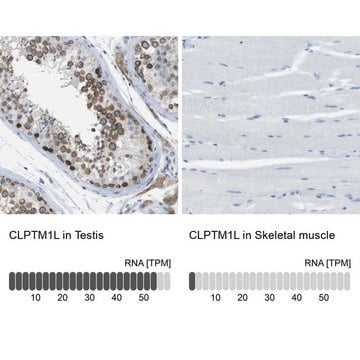MABE416
Anti-Cisplatin DNA Adducts Antibody, clone ICR4
clone 1CR4, from rat
Synonym(s):
CP9/19, Cisplatin DNA modification
About This Item
Recommended Products
biological source
rat
Quality Level
antibody form
purified antibody
antibody product type
primary antibodies
clone
1CR4, monoclonal
species reactivity
human
technique(s)
ELISA: suitable
dot blot: suitable
immunohistochemistry: suitable
isotype
IgG2aκ
shipped in
wet ice
target post-translational modification
unmodified
General description
Specificity
Immunogen
Application
Immunohistochemistry Analysis: A representative lot from an independent laboratory detected Cisplatin DNA Adducts in Head and Neck Squamous Cell Carcinoma tissues. (Welters, M. J., et al. (1999). Ann Oncol. 10(1):97-103.).
Epigenetics & Nuclear Function
Chromatin Biology
Quality
Dot Blot Analysis: A 1:1,000 dilution of this antibody detected Cisplatin DNA Adducts in 1.0 and 0.5 µg of Cisplatin treated DNA from HeLa cell lysates.
Physical form
Storage and Stability
Other Notes
Disclaimer
Not finding the right product?
Try our Product Selector Tool.
Storage Class Code
12 - Non Combustible Liquids
WGK
WGK 1
Flash Point(F)
Not applicable
Flash Point(C)
Not applicable
Certificates of Analysis (COA)
Search for Certificates of Analysis (COA) by entering the products Lot/Batch Number. Lot and Batch Numbers can be found on a product’s label following the words ‘Lot’ or ‘Batch’.
Already Own This Product?
Find documentation for the products that you have recently purchased in the Document Library.
Customers Also Viewed
Our team of scientists has experience in all areas of research including Life Science, Material Science, Chemical Synthesis, Chromatography, Analytical and many others.
Contact Technical Service







